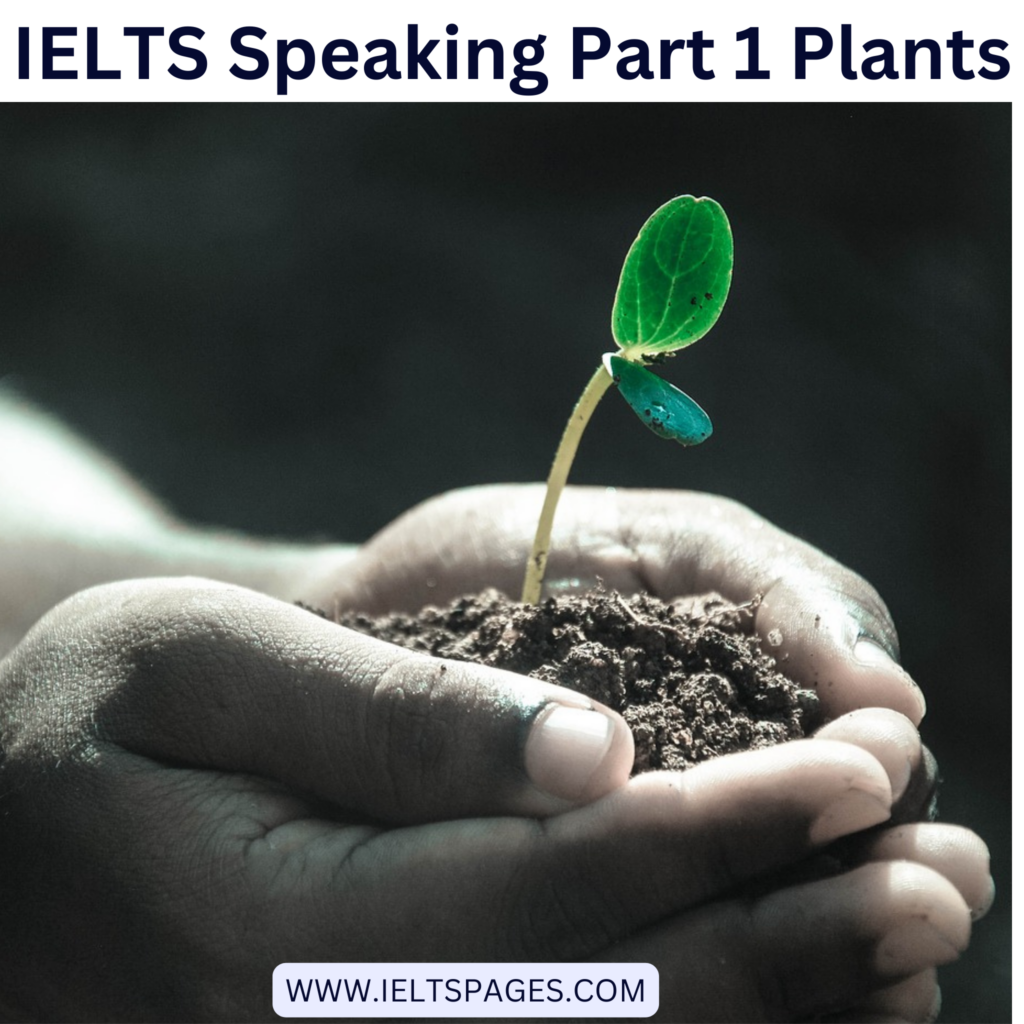
IELTS Speaking Part 1 Plants
What are plants’ critical roles in the ecosystem, and what is their significance in sustaining life on Earth?
So, plants play a huge role in sustaining life on Earth and are a significant part of the ecosystem. Plants are the source of many things to human beings and all the living beings on the planet.
Plants provide oxygen in exchange for carbon dioxide, which is not helpful for living beings. Apart from that, plants are the source of food, fruits, and vegetables, and they provide shelter.
How do plants contribute to the oxygen cycle, and what are the implications of their role in mitigating climate change?
So, plants play a huge role in mitigating climate change. The increased toxins and harmful gases in the atmosphere cause climate change.
And if people can plant enough trees and plants, then automatically, the Earth will be greener. It will also reduce the amount of carbon dioxide and carbon monoxide in the air.
Can you discuss the different types of plant adaptations to various environments, such as deserts, rainforests, and aquatic ecosystems?
If we talk about deserts, deserts have succulent plants that require less or no water for their growth. These plants usually have thick leaves, and they have thorns as well. If I talk about the rainforest, there are dense trees and green plants.
Many kinds of plants are present, like creepers and climbers, along with big, giant, shady trees. And if I talk about aquatic plants, aquatic plants are usually plants that can sustain themselves in deep water. They are present in the lowest part of the sea or the water body. It mainly includes algae, coral, and other kinds of plants.
What are some examples of symbiotic relationships between plants and other organisms such as pollinators, fungi, or bacteria?
Plants are a part of the ecosystem, and the ecosystem is built by connecting one species with the other. If I talk about the bees, they pollinate with the help of the flowers.
Everything is interconnected. The fungi, the bacteria, and even the more giant animals in the species consume plants. In return, the plants keep growing, and certain living organisms in the soil break down the nutrients for the plants to succeed.
How do plants obtain and utilize nutrients from the soil, and what factors affect their growth and development?
Plants derive the source of nutrients from the soil. In the soil, many bacteria and fungi break down complex molecules into more straightforward forms so that the plant can absorb them.
The soil contains many minerals, vitamins, and nutrients required for growth. In some cases, if the soil is not rich and doesn’t have many nutrients and minerals, it affects the plant’s development. In some instances, flower-bearing plants may not be able to bear the flower because of the lack of nutrients.
Can you explain the process of photosynthesis and its importance in converting sunlight into chemical energy for plant growth?
Photosynthesis means using the sun, water, and carbon dioxide by the plant to produce their food and release oxygen in return. In this process, there is also involvement of the nutrients and minerals the plant gains from the soil.
What are some examples of economically important plants and their uses in agriculture, the medicine industry, or culture?
Plants are widely used in all of the mentioned industries. Regarding agriculture, plants are grown in various paddy fields, and pulses and other things like sugarcane, peas, and fruits are grown on a large scale by the farmers.
There is a strategic layout before the growth of the crop. The crop that has to be grown is chosen by the farmer very carefully because only certain types of crops can be grown in a given area.
How do plants respond to environmental stresses such as drought, pollution, or extreme temperatures? What mechanisms do they employ for adaptation?
In extreme drought, the plant tends to sacrifice its growth. If the plant is flower-bearing or fruit-bearing, it might not be able to bear the flower or fruit. In some cases, if there is extreme heat and the weather is not appropriate, the leaves can get burnt from the sides, which can hinder plant growth.
Can you discuss the importance of biodiversity in plant ecosystems and the threats they face from habitat loss, invasive species, or climate change?
In a given area, there is a requirement for many plants for human beings to survive because they are the prime source from which oxygen is acquired, not only for human beings but for all the species on Earth.
When there are changes in the environment or some other plant that is foreign to that place, but it takes its place, it affects the flora of that particular area. The government can prevent it.
The government is already playing a massive role because seeds cannot be carried when you travel across the countries in India and many other countries. That is how they are protecting their flora.
What sustainable practices can individuals or communities adopt to promote plant conservation and preserve natural habitats?
Plant conservation is critical, and preserving the natural habitat of that species is very important. People should plant at least one or two trees a year to increase the greenery. They can also conserve plants by not cutting them down or burning the forest.